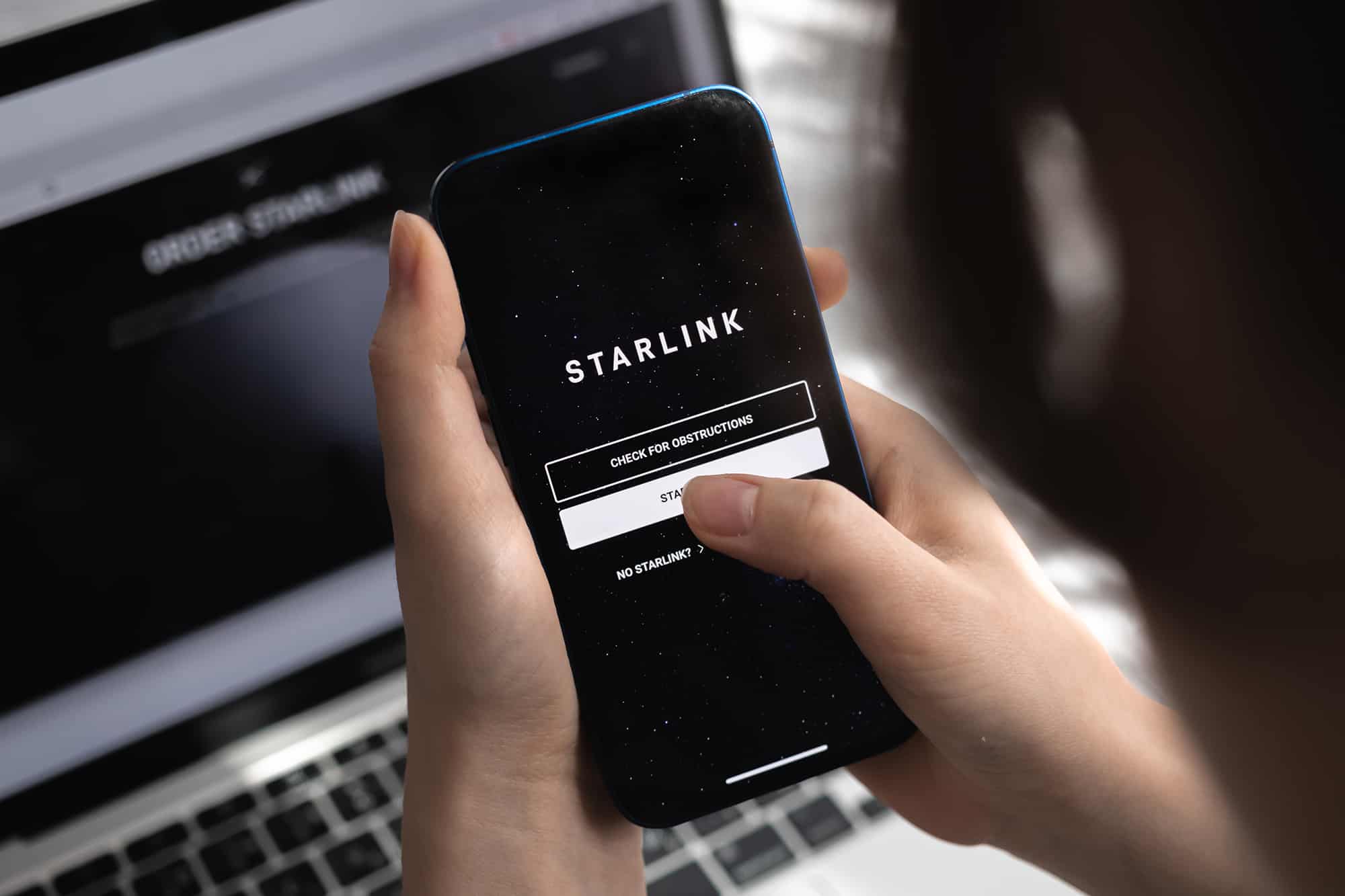How Starlink Blasts Ahead as the Next Best Satellite Internet Solution

Satellite internet is known as the worst method to connect to the internet because of long latency times, low bandwidth, and inconsistent signal. Enter SpaceX’s Starlink, which seeks to clean up satellite internet’s reputation and provide a next-generation broadband connection capable of keeping up with modern internet needs. If Elon Musk can muster the same fervor when he sent his own Tesla Roadster into space using SpaceX equipment, then Starlink internet may be as revolutionary to the broadband world as the electric car is to the automotive world.
Satellite Internet 101
Wired connections such as DSL, cable, and fiber-optic rely on a physical line buried underground between you and your internet service provider’s infrastructure. It’s the opposite for satellite internet. Instead, users rely on satellite dishes to bounce data from their provider and back.
That generally means satellite internet can’t reach the high speeds offered by wired connection types. Most satellite internet providers advertise download speeds between 50 Mbps and 100 Mbps, but the FCC reported that users achieve those speeds only 20 percent of the time.
None of that presents satellite internet as an attractive option, but it’s sometimes the only viable option for rural residents. That’s why Starlink has set out to make satellite internet a feasible, competitive option even when pitted against wired connection types.
Starlink’s Promise
Starlink advertises that users will be able to participate in activities — such as online gaming, streaming, and video calls — that were previously off limits to people with satellite internet. In theory, Starlink’s satellite network can deliver download speeds of up to 150 Mbps to any place with a clear view of the sky.

Since 2020, Starlink has revolutionized the way rural internet users access the web via a satellite connection. The user reviews and responses speak for themselves, with many users celebrating the absence of data caps, the simple contract, and, most importantly, the network performance.
How Starlink Works
Traditional satellite internet involves transmitting data via radio signals back and forth from satellite dishes on the ground to satellites in orbit 22,000 miles above the ground. SpaceX’s Starlink satellites operate much lower: 340 miles above the surface of the Earth. Because the satellite signals have less distance to travel, they can bounce from their ground station to their satellite in orbit to the user much faster than previously possible.
Starlink also strives to expand its satellite network to include as many as 42,000 satellites in the near future, providing more access and faster speeds while ensuring redundant coverage, which means no service dropouts. So far SpaceX has launched over 5,243 Starlink satellites.
Starlink Speeds

Starlink offers download speeds ranging from 50 Mbps to 220 Mbps and upload speeds reaching 30 Mbps — much faster than satellite internet competitors such as Viasat. SpaceX has revealed plans to increase download speeds as it launches more satellites, aiming for 300 Mbps, 1 Gbps, and 10 Gbps.
Download speeds of up to 1 Gbps are currently available only to cable or fiber customers, while 10 Gbps speeds are exclusively in the realm of fiber. That reflects Starlink’s mission to provide satellite internet that can compete with wired heavyweights.
Starlink Costs
Expect Starlink service to start at $90 per month for basic service and a $599 equipment fee at sign-up. Starlink offers a business service, boasting more stable connections and higher speeds for a monthly price of $500 and a $2,500 one-time fee for Starlink equipment.
Wired internet providers have different price points. AT&T Internet service, which includes download speeds of up to 5 Gbps with AT&T Fiber, costs between $55 and $245 per month. In comparison, Xfinity plans range from $30 to $299.95 monthly for similar speeds.
Starlink may cost more than similar bandwidth from a wired provider, but its service can theoretically reach more places than wired providers, which is the whole point (and advantage) of satellite internet.
Conventional satellite internet providers such as Viasat and Hughesnet cost substantially less than Starlink, but you get what you pay for. Viasat offers internet service starting at per month, but users only get download speeds reaching up to . Hughesnet plans, on the other hand, offer top download speeds of and plans that start at per month.